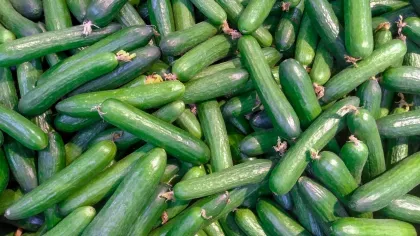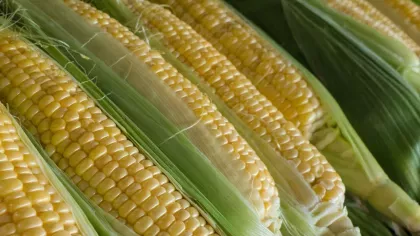
Squash
On this page
Pumpkins, courgettes, summer squashes and marrows all have something in common: they're all the same species.
Cucurbita pepo, with its many varieties, is a jack of all trades fruit (even if it’s normally eaten like a vegetable).
First domesticated over 8,000 years ago in Mexico, today C. pepo cultivars are grown all across the world as both food and ornamentals.
Cucurbita pepo varieties are part of the Three Sisters, a traditional indigenous American planting scheme that also uses maize (Zea mays) and beans (such as Phaseolus vulgaris) to support the growth of all three plants.
Plant description
Cucurbita pepo has a high number of varieties, so can vary in appearance. Generally, they are trailing vines that can grow across the ground or as climbers on a support. Leaves have between three to five lobes, are various shades of green, can have white veining and short sharp hairs. Fruits are widely varied, including large round pumpkins, longer thinner cucumber-like fruits, or wide flat lumpy fruits. Colours include orange, green, yellow and white, as well as mottled and striped.





Plant uses
Cultural
Carved pumpkins are a feature of Halloween celebrations across the globe, often called jack-o-lanterns.
Food and drink
Pumpkins are eaten as both a vegetable and a fruit, including in soups, curries and pies.
Pumpkin seeds can be processed to produce pumpkin seed oil, which is used in foods as a dressing, as well as taken as a supplement.
In Polish cuisine, pattypan squashes are pickled in sweet vinegar.
Courgettes are frequently used in French cuisine in dishes like ratatouille, as well as being turn into alternate pasta, called courgetti.
The flowers of Cucurbita pepo can be deep fried into fritters.
Materials and fuels
The leaves and vines are occasionally used as animal feed.
Did you know?
The scientific name ‘pepo’ refers to the fact the fruit, like pumpkins and courgettes, is a type of berry with a hard rind called a pepo.
According to the Guinness Book of Records, the largest ever marrow weighed just over 116kg.
Where in the world?

Most soil types, in full sun.
Find it in our gardens
Kew Gardens
A botanic garden in southwest London with the world’s most diverse living plant collection.
Location
Edible Science: Kew's Kitchen Garden
View map of Kew Gardens





